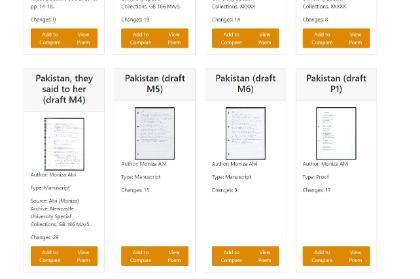Poetic Transformations
What is 'Poetic Transformations'?

What is the larger project?
'Poetic Transformations' is the first step towards a larger investigation of contemporary poetry composition and revision, an investigation which will foreground the complex and sometimes counter-intuitive ways that new media technology has reshaped contemporary writing. Questions we will ask in this project include the following: how do analogue and digital media cross paths or interact in contemporary literary composition? Does manuscript composition survive into the digital period, and - if so - in what form? What kind of revision/rewriting practices does digital writing tend to promote? In order to answer these questions, we will draw on digital analysis as well as the recent tradition of genetic criticism, finding ways to both analyse and visualise the work of contemporary poetic composition.
What does the pilot do?
The eleven witnesses are transcribed as TEI and stored in an open source native XML database, allowing for full text searching. The ‘view poem’ page places the styled TEI alongside a PDF of the manuscript or print edition and a cosine similarity function supports an autogenerated spine index and allows users to compare witnesses. Any witness can be compared with any other, and any number of witnesses can be compared at one time.
What doesn't the pilot do?
In a future iteration of the project, we would like to find ways of more clearly visualising or ‘animating’ revisions and textual changes, developing a ‘playback’ option so that changes can be viewed sequentially from one witness to another. Integrating the spine index with the comparison screen would also allow us to show the movement of lines through multiple drafts of the poem. Another possibility is to go beyond the cosine similarity function to develop more nuanced and flexible methods of comparison and analysis, integrating this with increased visualisation and animation. Finally, the current pilot does not transcribe and mark-up the digital video of Alvi reading the poem in person. As part of the larger project, we will ask how the live performance of poems might be most effectively transcribed, emphasising features such as pitch, speed, volume, and pauses.
Principal Investigator: Linda Anderson, Mark Byers, Sinead Morrissey
Development: Kate Court, Fiona Galston, Mark Turner
Development advisors and textual encoding: James Cummings, Tiago Sousa Garcia
